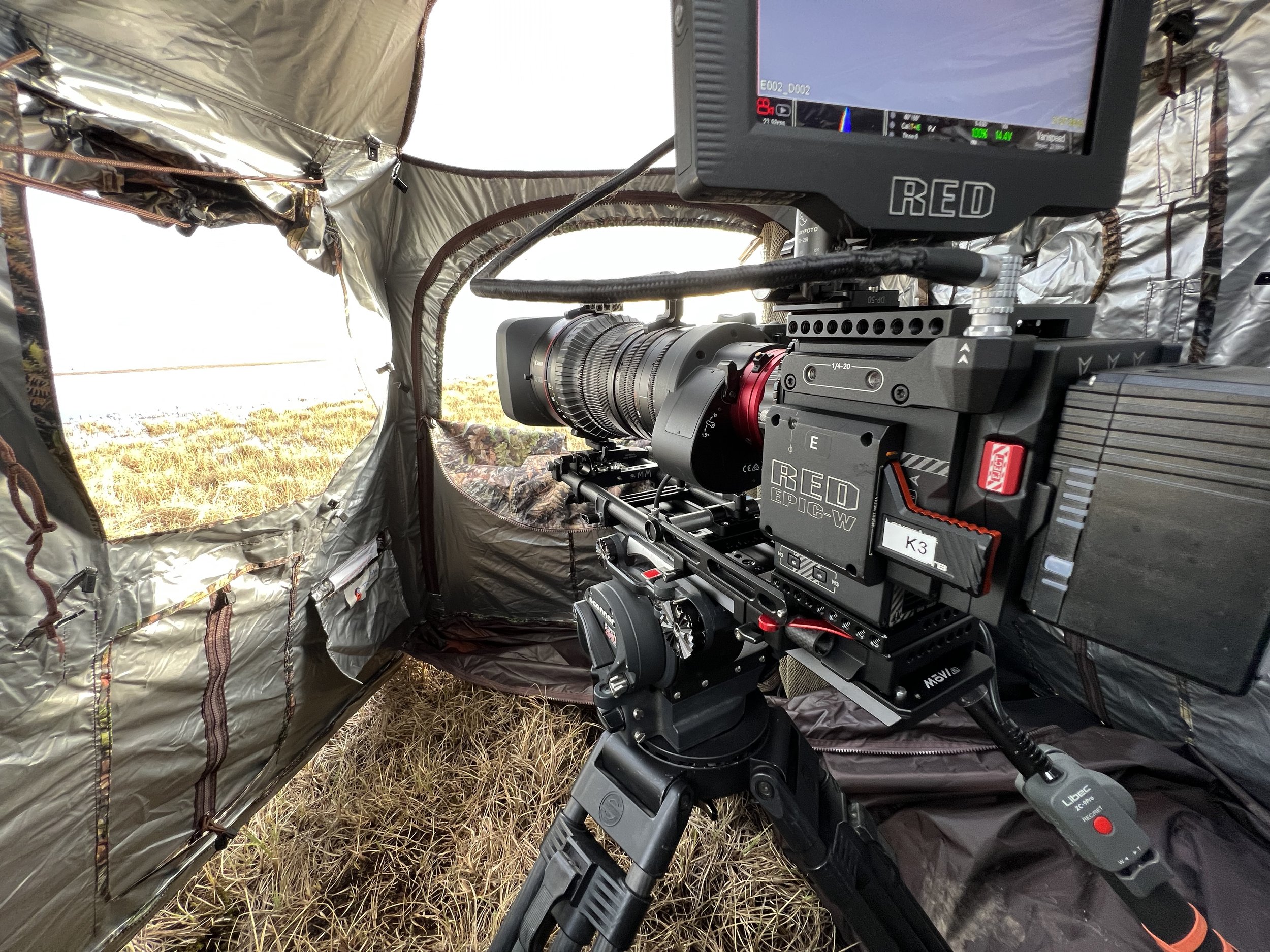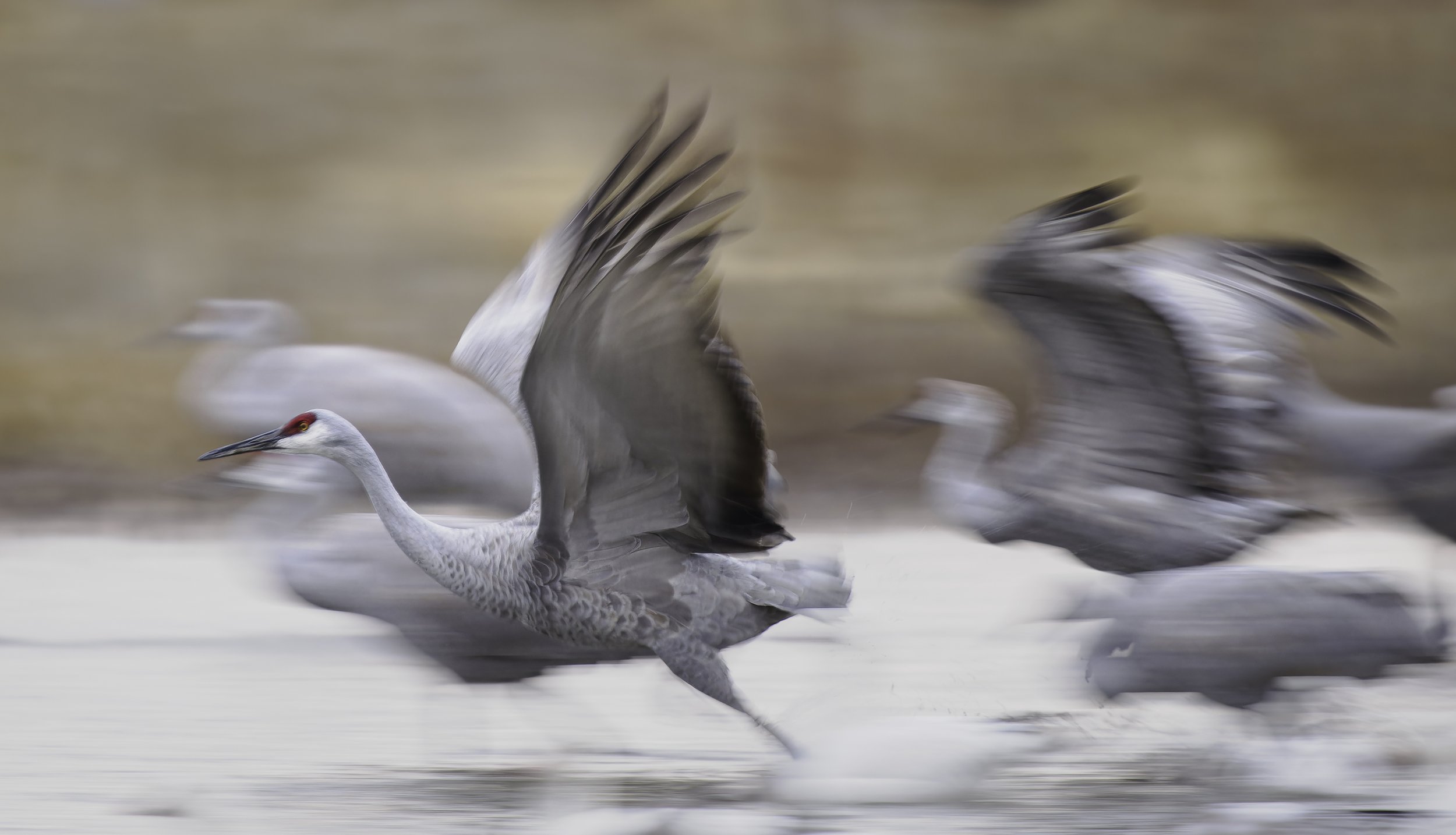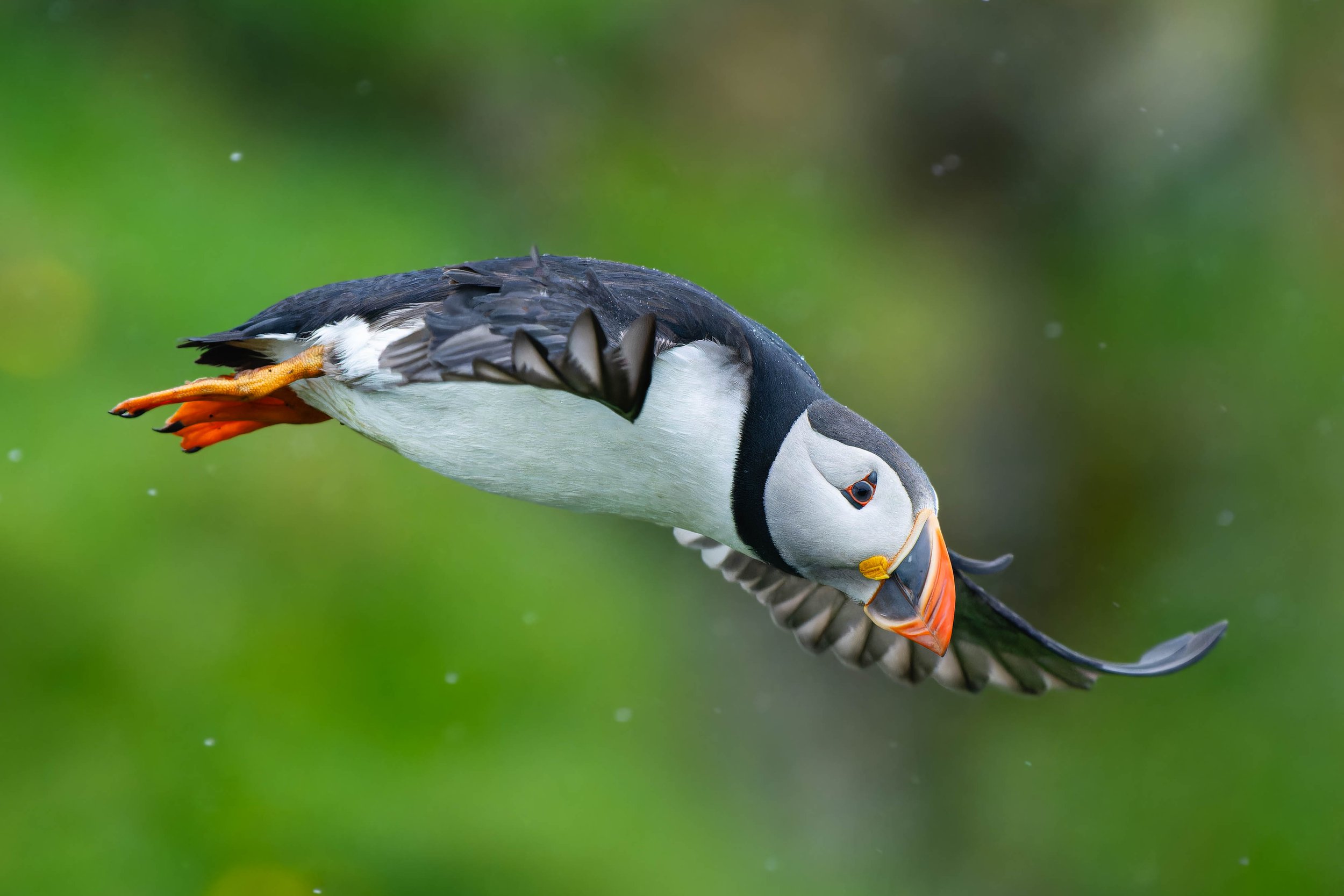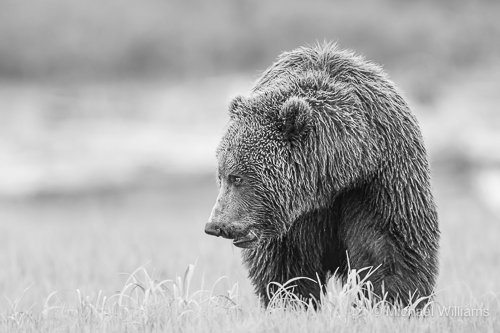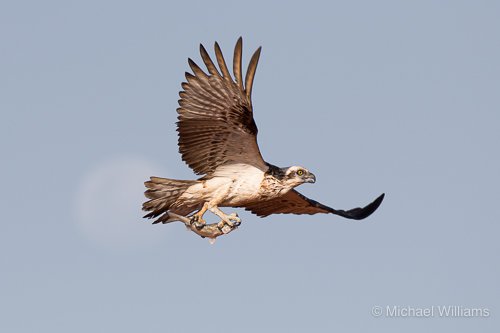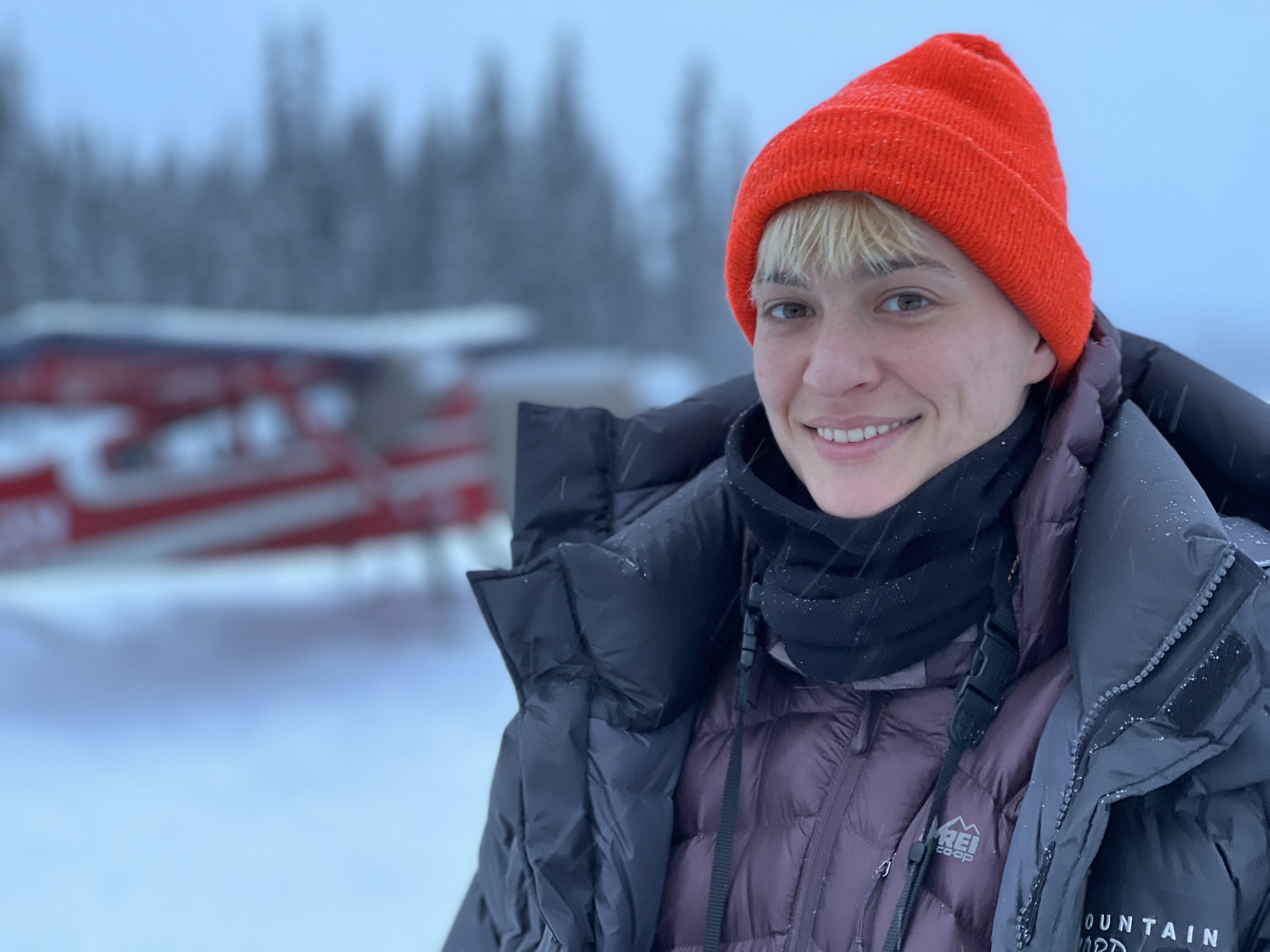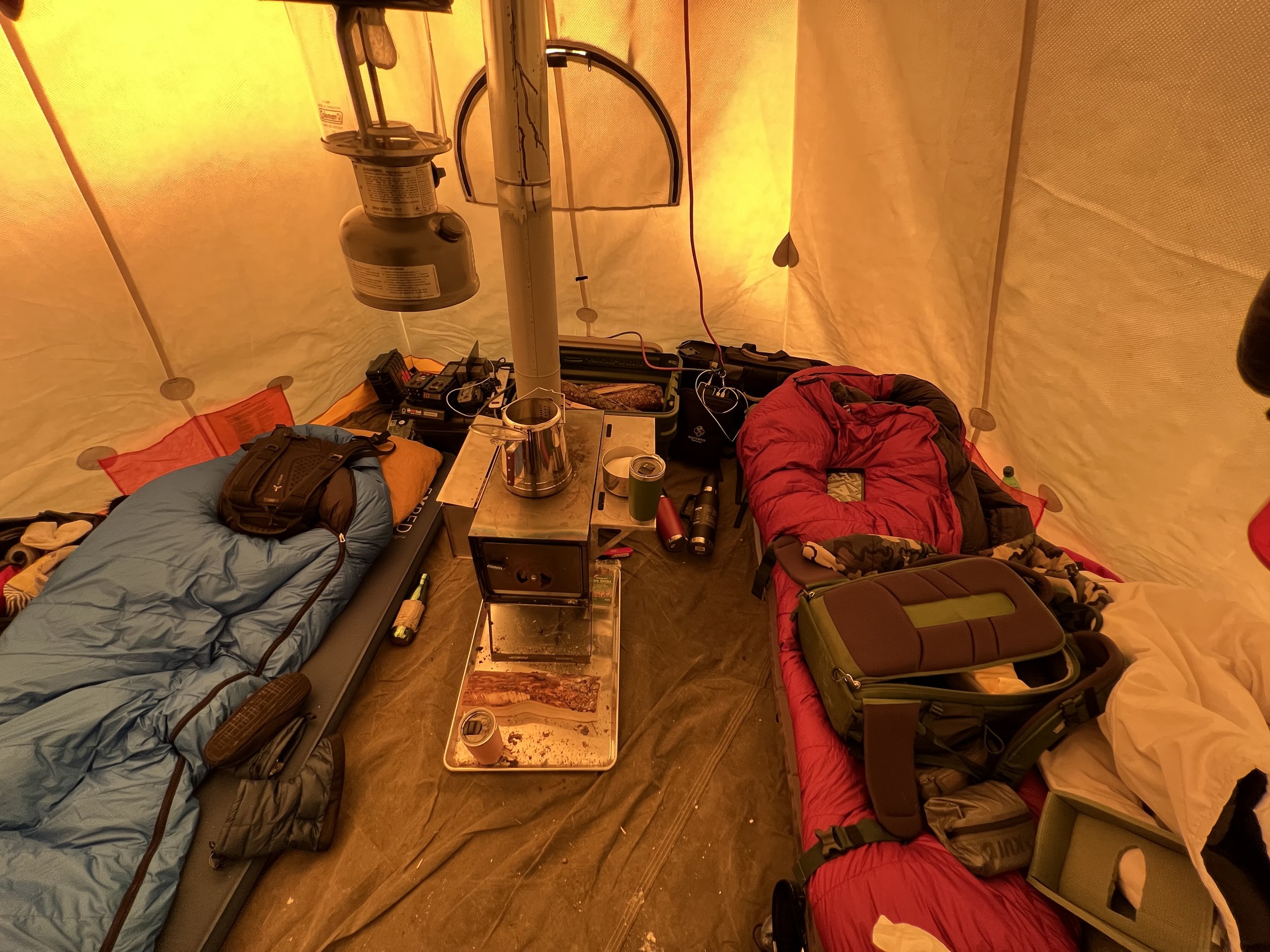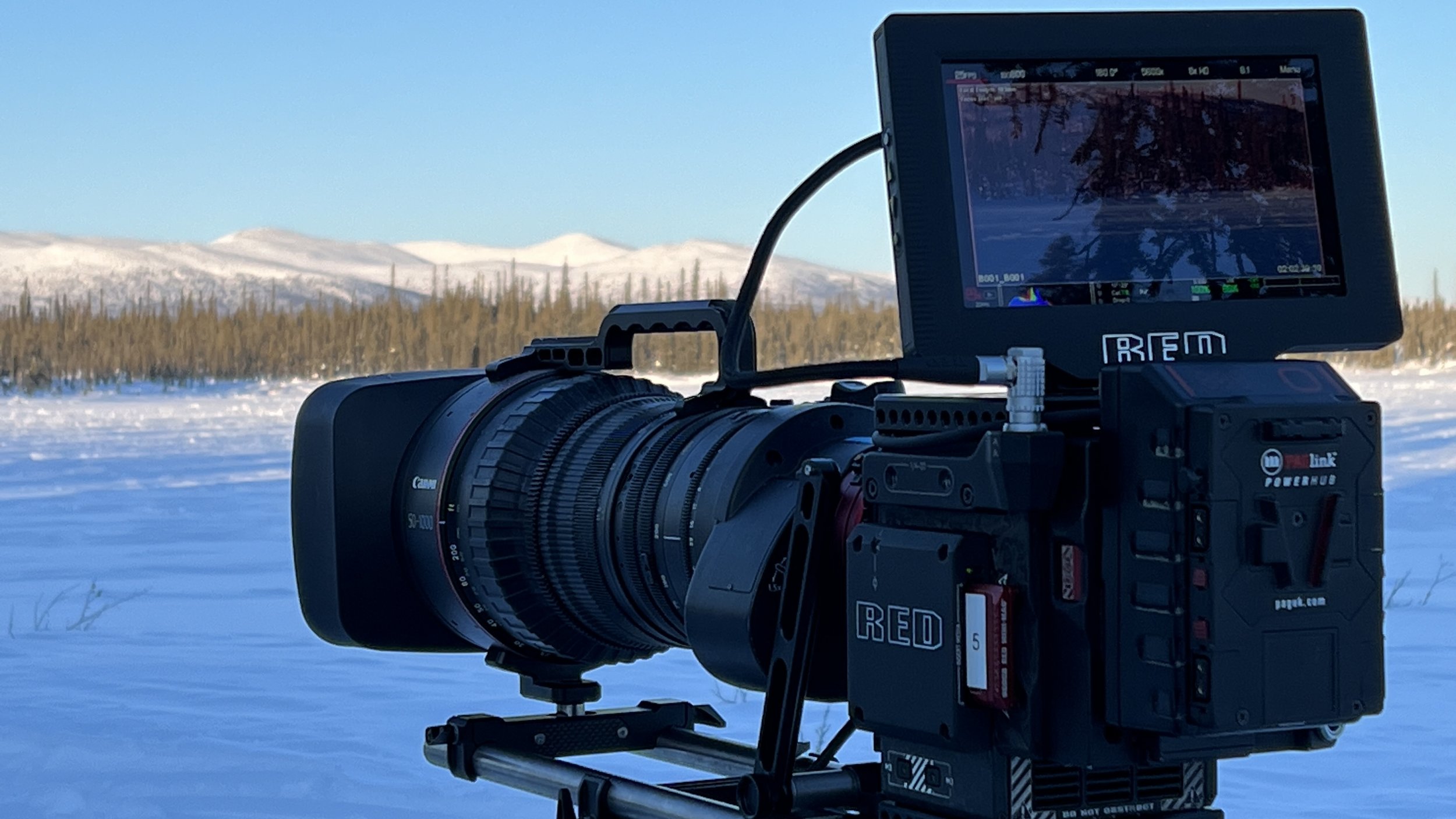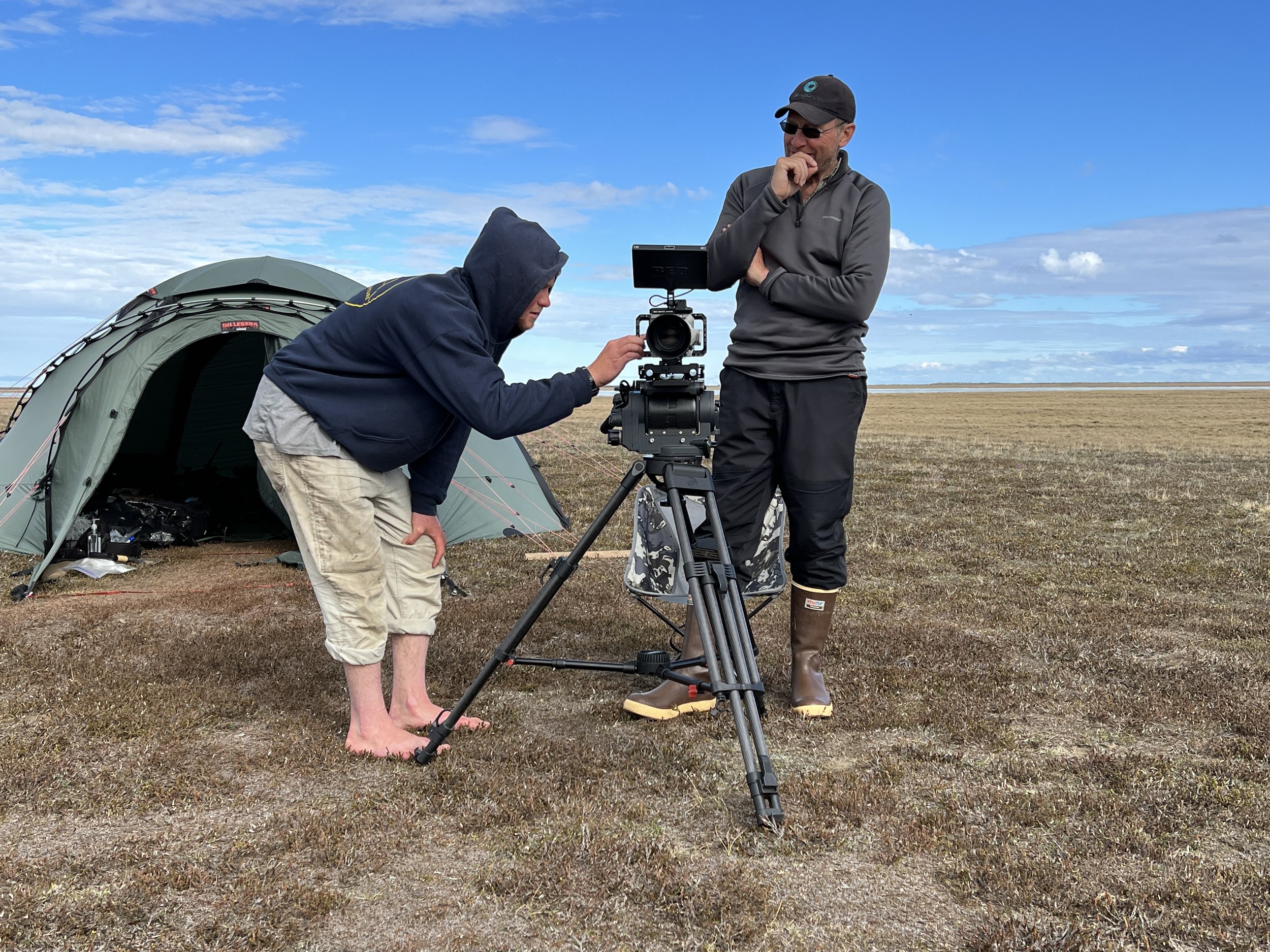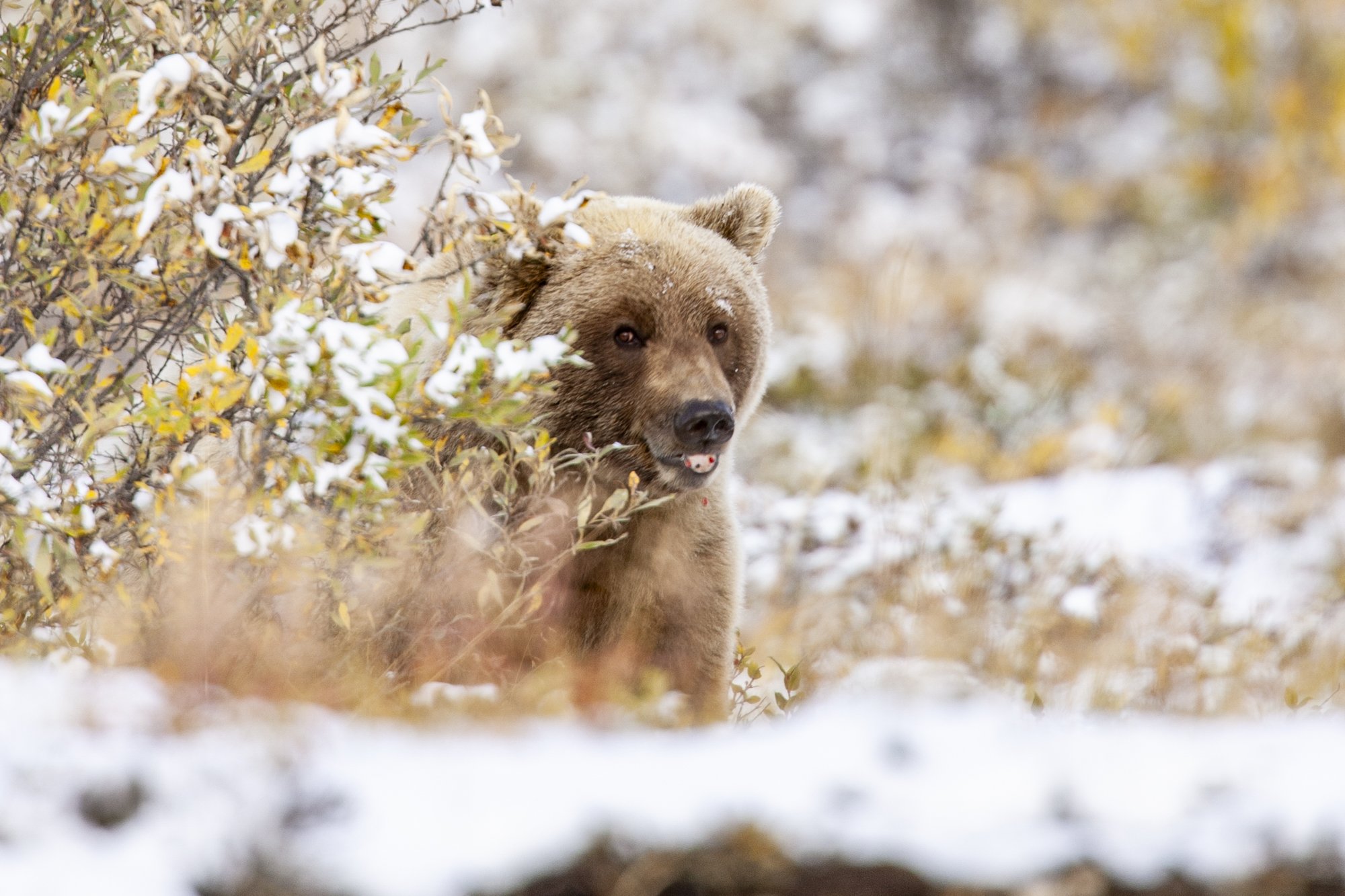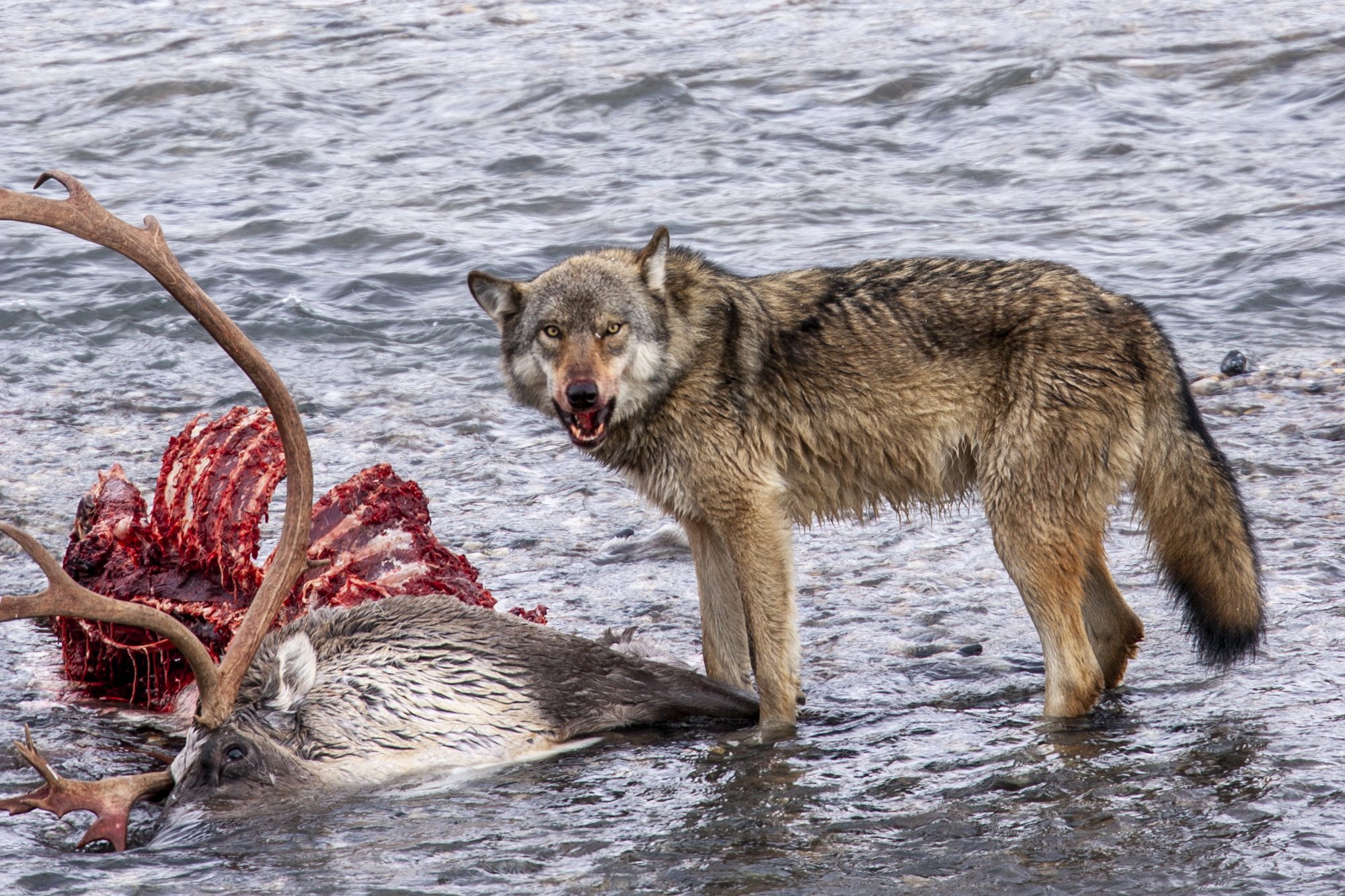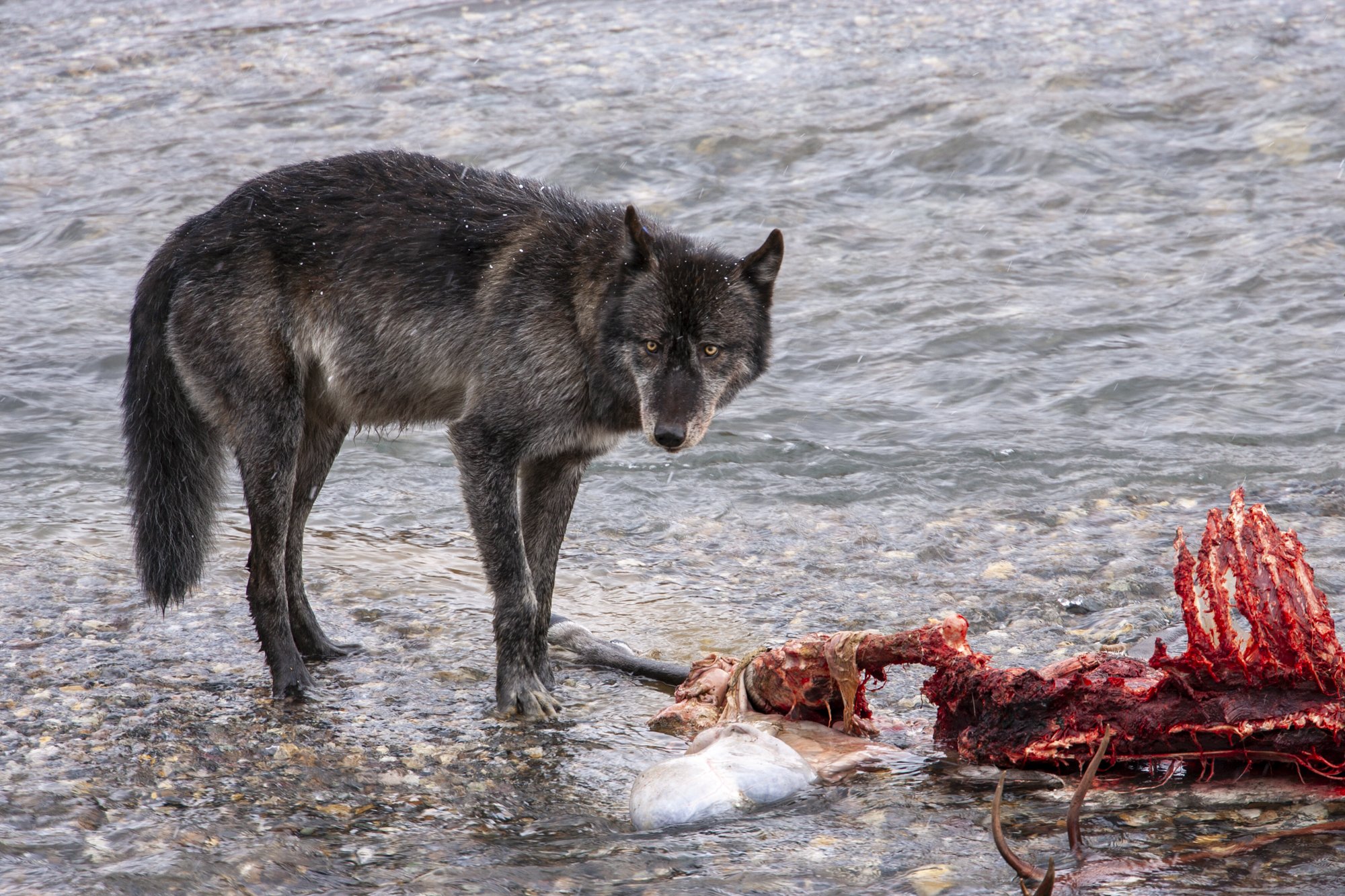
The Truth and Legend Podcast is a companion to the YouTube channel. We discuss wildlife photography and cinematography, experiences in the field, and the success or defeats growing our YouTube channel.
AI, Winter Driving to the Arctic and Commercial Shoots-Episode 23
In this episode of the Truth and Legend podcast, hosts Michael Mauro and Brandon Day discuss various topics ranging from the challenges of managing equipment on set, personal health experiences, and the features of a new truck. They delve into the intricacies of filming in extreme Arctic conditions, innovative filming techniques using gimbals, and the opportunities for car testing in cold environments. The conversation also touches on the busy season in the Arctic and the unique challenges faced during shoots. In this conversation, Michael and Brandon discuss their experiences filming in Deadhorse, Alaska, and the challenges they faced during their expedition. They explore the unique environment of Deadhorse, the journey to the Arctic Ocean, and the wildlife encounters along the Dalton Highway. The duo also shares insights on planning an Alaskan expedition, innovative filming techniques, and the importance of audio quality in filmmaking. Their discussion highlights the beauty and challenges of remote filming locations, as well as the creative solutions they employed to overcome obstacles. In this conversation, Brandon and Michael discuss various aspects of filmmaking, including the importance of teamwork, the challenges of pricing in freelance work, and the balance between stills and video production. They emphasize the value of personal projects for creatives and explore the implications of AI in the creative industry, particularly regarding personal identity and safety.
Missed Moments, Moose Tales, and Gear Challenges: Truth and Legend Podcast Ep. 22
In Episode 22 of the Truth and Legend Podcast, Brandon Day and Michael Mauro reflect on their recent photography and videography experiences, sharing captivating field stories, technical insights, and hard-learned lessons. From challenges in wildlife shoots and industrial projects to equipment reviews and the nuances of event photography, the duo dives deep into the art and science of their craft. They also discuss missed opportunities, the importance of preparation, and their aspirations for future wildlife courses. This episode captures the dynamic and ever-evolving world of photography and videography through the lens of two seasoned professionals.
Takeaways:
Always Keep the Camera Rolling: Missed golden moments, like a heartfelt quote from an interviewee, underscore the importance of capturing everything.
Preparation is Key: Cheat sheets for white balance and early venue arrival can save significant time and headaches on shoots.
Gimbal Limitations: While versatile, gimbals like the Ronin can struggle in windy conditions, causing micro jitters in footage.
The Power of the Red Camera: Shooting wildlife and documentaries with the Red delivers unparalleled quality but comes at the cost of managing large amounts of data.
Mastering Event Photography: Adapting to challenging lighting conditions, such as neon-lit bowling alleys, requires precise gear setup and techniques.
Wildlife Behavior Matters: Understanding the nuances of animal movement, like doll sheep during the rut, can lead to stunning shots.
The Importance of Versatile Lenses: Lenses like the Sigma 60-600mm are invaluable for storytelling, allowing for a mix of wide and detailed shots.
Balancing Personal and Corporate Work: Wildlife shoots are peaceful and fulfilling but often need to be supplemented by corporate or event projects to pay the bills.
Exploring Future Education: Plans to develop wildlife photography and videography courses highlight the duo's commitment to sharing their knowledge.
Evolving Tools of the Trade: AI advancements in tools like Photoshop offer new possibilities but challenge the authenticity of photography.
Episode 21 - WE'RE BACK New Gear, Data Challenges, Moose and Arctic Adventures
In this conversation, Michael Mauro and Brandon Day discuss various aspects of filmmaking, including camera upgrades, shooting techniques, and the challenges of wildlife filming. They delve into the importance of workflow efficiency, battery management, and the unique experiences encountered while filming in the Arctic. The discussion also touches on personal reflections, safety protocols, and storage solutions for filmmakers, providing insights into the practicalities of their craft.
Takeaways - Data management is a significant challenge for video, less for photographers. - The podcast is entering its second season after a long hiatus. - Moose populations are affected by various environmental factors. - Denali offers unique opportunities for wildlife photography. - Future Wild and Exposed podcast episodes will focus on the stories behind images. - Wildlife photography requires patience and observation. - New gear can enhance filming capabilities but comes with a learning curve. - Commercial projects can be demanding but rewarding. - The wildlife filming industry is currently slow, with hopes for improvement in 2025. - Using new technology effectively can lead to better storytelling in photography. The new camera features enhance usability and grip. - Shooting requirements for agencies are evolving towards vertical formats. - Vertical video is becoming increasingly important for modern content. - Wildlife filming requires specific techniques and considerations. - Dreams can symbolize transformation and change. - Efficient workflows can save time and improve productivity. - Pre-recording capabilities are crucial for wildlife filming. - Battery management is essential for long shoots in remote locations. - The Arctic offers pristine environments for filming. - Meeting unique individuals in the field enriches the filmmaking experience.
WE'RE BACK New Gear, Data Challenges, Moose and Arctic Adventures
In this conversation, Michael Mauro and Brandon Day discuss various aspects of filmmaking, including camera upgrades, shooting techniques, and the challenges of wildlife filming. They delve into the importance of workflow efficiency, battery management, and the unique experiences encountered while filming in the Arctic. The discussion also touches on personal reflections, safety protocols, and storage solutions for filmmakers, providing insights into the practicalities of their craft. Takeaways
Data management is a significant challenge for video, less for photographers.
The podcast is entering its second season after a long hiatus.
Moose populations are affected by various environmental factors.
Denali offers unique opportunities for wildlife photography.
Future Wild and Exposed podcast episodes will focus on the stories behind images.
Wildlife photography requires patience and observation.
New gear can enhance filming capabilities but comes with a learning curve.
Commercial projects can be demanding but rewarding.
The wildlife filming industry is currently slow, with hopes for improvement in 2025.
Using new technology effectively can lead to better storytelling in photography. The new camera features enhance usability and grip.
Shooting requirements for agencies are evolving towards vertical formats.
Vertical video is becoming increasingly important for modern content.
Wildlife filming requires specific techniques and considerations.
Dreams can symbolize transformation and change.
Efficient workflows can save time and improve productivity.
Pre-recording capabilities are crucial for wildlife filming.
Battery management is essential for long shoots in remote locations.
The Arctic offers pristine environments for filming.
Meeting unique individuals in the field enriches the filmmaking experience.
Wild Focus: Gerrit Vyn
The crew interviews Gerrit Vyn, a wildlife photographer and project leader at the Cornell Lab of Ornithology. Gerrit shares his recent trip to Antarctica and his experiences photographing wildlife in challenging conditions. He also discusses his background in natural history and bird audio recording. The conversation covers topics such as the equipment used for audio recording, the difficulties of capturing clean recordings in noisy environments, and the satisfaction of discovering and documenting unique vocalizations. Gerrit shares some of his most rewarding recordings, including yellow-billed loons and barred owls. In this part of the conversation, They discuss the challenges of recording audio in the Arctic, including dealing with bugs and wind. They also talk about the techniques Gerrit has developed for documenting birds and wildlife, including the use of blinds. They discuss the importance of ethical filming and the need to balance conservation with capturing valuable footage. They also touch on Gerrit's work in the National Petroleum Reserve and Isenberg Lagoon, and the efforts to protect these areas. Finally, they discuss Gerrit's company, Tragopan, which produces photography blinds and other equipment for wildlife photographers. In this final part of the conversation, Gerrit and the hosts discuss the different types of blinds used for bird photography, including laydown blinds, one-person blinds, and chair blinds. They also share their experiences with encountering bears while in the blinds. Gerrit mentions his plans to explore the Colville River special area and film raptors and landscapes there. The conversation ends with a discussion about camera gear, including Gerrit's use of Nikon and Canon cameras and Michael's experience with RED cameras.
Wild Focus: MooseMan Nature Photos Talks Wildlife Photography, Videography & More
In this conversation, Rick Libby and Libby Corbin of Team Moose Man discuss their background in wildlife photography and their transition to shooting video. They talk about the evolution of their gear and how it has improved their video quality. They also emphasize the importance of continuous learning and listening to others in the field. The conversation touches on the role of social media, particularly YouTube, in showcasing their work. They also discuss the challenges of capturing audio and video in the field. The conversation explores the elusiveness of moose and the fascination people have with them. The hosts discuss the process of creating content and telling stories about moose behavior. They also talk about the naming of individual bulls and the challenges of observing and understanding their behavior. The stages of a moose rut and the infatuation people have with moose are also discussed. The conversation concludes with a reflection on the mystery and complexity of moose. In this conversation, MooseMan and Michael Mauro discuss their experiences with bears and share their techniques for managing and organizing video files. They talk about the importance of naming and categorizing videos, as well as the different approaches they take. MooseMan prefers to organize his videos chronologically, while Michael uses dates and brief descriptions. They also discuss the size of their video libraries and the process of deleting unwanted footage. The conversation highlights the importance of memory and attention to detail when managing video files. They also discuss the coexistence of bears and moose in the wilderness and share humorous anecdotes. The conversation concludes with MooseMan and Michael expressing their gratitude and appreciation for their experiences and the opportunity to share their videos with others.
Wild Focus: Mastering Nature Photography and Insights from Lee Hoy
Lee Hoy, a professional nature photographer and workshop instructor, shares his journey and passion for nature photography. He discusses how he got into photography, his experiences leading workshops, and his role as an OM System Ambassador. Lee also talks about the challenges and rewards of leading trips to Yellowstone National Park. In this part of the conversation, Lee Hoy discusses the highly admired workshop leader Lisa Langell and the challenges and rewards of being a tour guide. He also talks about the importance of diversifying and adapting in the workshop industry. Lee shares his thoughts on the demands of being a workshop leader and the value of hard work and honesty in photography. He emphasizes the importance of practice and learning from failure, as well as the benefits of shooting vertical and getting composition right. Finally, Lee discusses his process and philosophy behind his YouTube channel. In this conversation, Lee Hoy discusses the importance of field craft and composition in photography. He emphasizes the need to learn and master these skills to capture better images. Lee also talks about teaching photography techniques and his desire to help others improve their skills. He shares his experience with understanding the circadian rhythm of natural light and using tools like the live graduate neutral density filter. Lee expresses his passion for creating a photography show that is educational, entertaining, and inspirational. He believes in the value of authenticity and hard work in photography and encourages photographers to embrace their failures as opportunities for growth. Lee also discusses the rise of authentic content on YouTube and the potential for creating cinematic educational content.
Wild Focus: Wildlife Cinematography Insights with Doug Gardner
In this conversation, Doug Gardner discusses his work as a wildlife cinematographer in South Carolina and shares tips for social media and YouTube success. He also introduces his camera operator bootcamp and workshops, where he teaches aspiring filmmakers the skills they need to succeed in the industry. Doug emphasizes the importance of camera experience and problem-solving skills in filmmaking. He also discusses the diverse wildlife and habitats in South Carolina and the opportunities they provide for filming. Additionally, Doug talks about the use of drones and new probe lenses in his work and shares his experiences filming prothonotary warblers in nest cavities. The conversation covers various themes related to wildlife production and photography. The topics discussed include problem solving and pre-production work, creating a disturbance-free environment for wildlife filming, networking and building relationships in the industry, developing story ideas, marketing oneself as a story developer, the challenges and success of producing a TV show, balancing production quality and budget constraints, the potential of YouTube and online platforms, the future of wildlife production and workshops, and the challenges of filming in extreme conditions. Doug and Michael discuss their experiences with camera equipment and problem-solving techniques while filming in extreme conditions. They share stories of overcoming camera overheating issues and the creative solutions they devised to keep their equipment cool. They also discuss the potential impact of Nikon's acquisition of RED cameras and the future of the industry. Doug emphasizes the importance of teaching and sharing knowledge through his YouTube channel and workshops.
Wild Focus: Art and Adventure with Kate and Adam Rice
Kate and Adam Rice discuss their journey of setting up a gallery in Anchorage, Alaska, and their experiences with the Fur Rendezvous Festival. They also talk about their plans for continuing their tours and expanding their business. The conversation covers the challenges they faced in preparing for the gallery opening, the excitement of the festival, and the lessons they learned along the way. They also discuss the potential for hosting events in the gallery and the upcoming openings for their tours. Kate and Adam discuss their expanded tour offerings, including camping tours, fly-out lodge trips, and private boat trips. They also talk about their interest in incorporating video into their work and the challenges of managing the gallery while balancing their other responsibilities. They share their plans for their nonprofit organization, For Love of Bears, which focuses on bear conservation and education. They emphasize the importance of coexisting with bears and the need for bear education programs. Finally, they discuss the process of opening their gallery and the serendipitous events that led them to their current location. In this conversation, Kate and Adam discuss their experiences with social media and promotion, including the challenges of navigating different platforms and the importance of video content. They also touch on the issues of music licensing and copyright on social media. The conversation then shifts to the impact of AI on photography and the ethics of using AI in image editing. Kate and Adam also share their tips for preparing for winter travel and discuss the future of AI in photography. Finally, they talk about the recognition and awards they have received for their work.
Takeaways
Social media is a crucial tool for promoting and sharing content, but it can be time-consuming and challenging to keep up with the ever-changing algorithms.
Video content is becoming increasingly important on social media platforms, and it can help to engage and grow an audience.
Navigating music licensing and copyright issues can be complex, and it's important to be aware of the rules and regulations when using music in social media posts.
AI technology has both positive and negative implications for photography, and it's important to maintain the integrity of the art form and be transparent about any editing or manipulation.
Links
https://www.instagram.com/karphotography/
https://www.karphotography.net
Alaska Birds and Colorado Wild Horses
In this conversation, Eric shares his recent birding trip to Homer, Alaska. He discusses the challenges of filming birds in noisy environments and the difficulty of finding specific bird species. Eric also talks about photographing sea otters and the impact of ice on wildlife photography. Additionally, Brandon and Michael share their experiences on a wild horse photography trip and the challenges they faced in snowy conditions. In this part of the conversation, Brandon and Michael discuss their experiences exploring the wild horses and sage grouse in the area. They share the challenges they faced in photographing the horses and the behavior they observed. They also talk about the difficulty of finding a lek and the importance of protecting these breeding grounds. The conversation then shifts to the breakdown of their Jeep and the panic that ensued. They discuss the challenges of diagnosing and fixing the issue in the cold weather. Finally, they recount their struggle to get out of the mountains and the decisions they had to make along the way. In this part of the conversation, the hosts recount their harrowing experience of running out of fuel in the wilderness and making the decision to stay overnight. They describe the challenges they faced in getting back to the hotel, including a broken serpentine belt and a failing power steering pump. They share their search for parts and a welder to fix the broken bracket, as well as their efforts to address a check engine light and change the oil. Despite the setbacks, they also find moments of joy, such as interacting with horses and enjoying a Mexican dinner. In this episode, the hosts discuss their recent Jeep adventure and the challenges they faced along the way. They share stories of mechanical issues and the impact it had on their trip. Despite the setbacks, they highlight the beauty of the location and the wildlife encounters they had. The hosts also discuss the importance of being prepared for road trips and share upcoming guests and the bear trip they have planned. They encourage audience participation and share their plans for future episodes.
Wild Focus: From Whale Sharks to Wolves
In this episode, the hosts and guest discuss various topics, including AI video generation, workflow and data management, living in New Zealand, and wildlife photography. They also share their experiences with whale sharks and great white sharks, as well as the importance of wildlife safety and precautions. In this part of the conversation, Mike Williams discusses his experiences photographing wildlife in Australia, including encounters with venomous snakes. He also shares the process of writing and publishing his book. The conversation then shifts to Alaska, where Mike and the hosts discuss their shared love for the state and their experiences with bear and wildlife viewing in Katmai National Park. They also recount their meeting in the park and the incredible moments they witnessed. In this conversation, the hosts discuss various topics related to wildlife photography and travel. They talk about a boat-based trip to Alaska and the incredible experiences they had, including filming wolves. They also discuss essential gear for traveling, such as a good bag and bug nets. The conversation touches on the importance of sunscreen and protecting gear from dust and moisture. The hosts share their memorable wildlife encounters, including seeing wolves and eagles. They also talk about choosing the right lens for video and the significance of a good camera bag. The conversation concludes with a discussion on future plans and photography trips.
In this episode, the hosts and guest discuss various topics, including AI video generation, workflow and data management, living in New Zealand, and wildlife photography. They also share their experiences with whale sharks and great white sharks, as well as the importance of wildlife safety and precautions. In this part of the conversation, Mike Williams discusses his experiences photographing wildlife in Australia, including encounters with venomous snakes. He also shares the process of writing and publishing his book. The conversation then shifts to Alaska, where Mike and the hosts discuss their shared love for the state and their experiences with bear and wildlife viewing in Katmai National Park. They also recount their meeting in the park and the incredible moments they witnessed. In this conversation, the hosts discuss various topics related to wildlife photography and travel. They talk about a boat-based trip to Alaska and the incredible experiences they had, including filming wolves. They also discuss essential gear for traveling, such as a good bag and bug nets. The conversation touches on the importance of sunscreen and protecting gear from dust and moisture. The hosts share their memorable wildlife encounters, including seeing wolves and eagles. They also talk about choosing the right lens for video and the significance of a good camera bag. The conversation concludes with a discussion on future plans and photography trips.
Takeaways
AI video generation technology is becoming increasingly advanced and can create realistic videos that are difficult to distinguish from real footage.
Effective workflow and data management systems are crucial for managing large amounts of data in photography and filmmaking.
Living in New Zealand offers unique opportunities for wildlife photography, with diverse bird and reptile species.
Interacting with wildlife, such as whale sharks and great white sharks, can be thrilling but requires caution and respect for the animals.
Taking necessary safety precautions is essential when encountering wildlife, especially in regions with venomous snakes and other dangerous species. Photographing wildlife in Australia offers unique opportunities to capture stunning shots, but it also comes with challenges such as encountering venomous snakes.
Writing and publishing a book requires discipline, dedication, and the ability to adapt to unexpected challenges.
Alaska is a captivating destination for wildlife enthusiasts, offering opportunities to observe and photograph bears and other wildlife in their natural habitats.
Meeting fellow wildlife photographers and enthusiasts in remote locations can lead to unexpected connections and shared experiences. A boat-based trip to Alaska offers incredible opportunities for wildlife photography, including the chance to film wolves.
A good bag is an essential piece of gear for traveling, as it can greatly enhance the overall experience.
Bug nets and sunscreen are important for protecting oneself from insects and the sun while out in the field.
Memorable wildlife encounters, such as seeing wolves and eagles, can leave a lasting impact on photographers.
Choosing the right lens for video is crucial, and having a versatile range can allow for capturing a variety of shots.
A reliable camera bag is essential for protecting gear and ensuring it is easily accessible during photography trips.
Taking precautions to protect gear from dust and moisture is important, especially in dusty or humid environments.
Planning future photography trips and exploring new locations can keep photographers inspired and motivated.
Photographing eagles can be a rewarding experience, and understanding their behavior can lead to better shots.
Closing remarks and expressing gratitude for the conversation and the opportunity to share experiences.
Produce This: Insights from the Wild with Harri - Episode 13
In this conversation, Harri, a producer director in the wildlife film industry, discusses her background, birding experiences, and her work on the show 'Wings Over Water.' She shares stories of birding trips in New Jersey and Alaska, highlighting the diverse bird species found in these areas. The conversation also touches on the significance of unusual bird sightings and the challenges of filming in 3D for wildlife documentaries. The conversation covers topics such as post-production and driving a box truck, the roles of an associate producer and producer-director, working in small teams and collaboration, working in extreme conditions in the Arctic, inspiration and aspirations of flying a plane and getting a van, using AI for scriptwriting, and the potential of AI in visual arts. In this part of the conversation, the speakers discuss the role of AI in productions and how it can make certain tasks easier. They also talk about the limitations of AI in terms of creativity and the importance of embracing it in workflows. The conversation then shifts to the topic of increasing diversity in wildlife filmmaking and the challenges faced by underrepresented groups. The speakers share their thoughts on building networks and the impact of social media in promoting inclusivity. They also discuss the importance of creating a unique reel to stand out in the industry and taking control of one's career. In this final part of the conversation, the hosts discuss podcasts, books, and wildlife documentaries they recommend. They also touch on the importance of conservation and environmental action. The conversation then shifts to the impact of artificial intelligence and technology on society. They conclude by discussing the future of wildlife filmmaking and sharing their thoughts on the film 'The Velvet Queen.'
Life in Focus: Cameras, Conversations, and Chasing Dreams
Sharing stories about wildlife trail cameras, including encounters with bears and mountain lions. The conversation also touches on seasonal depression, the lengthening days, and the famous bear and traffic cone footage that has gained attention on platforms like Joe Rogan's podcast. They discuss the use of manual focus and the difficulties they face with LASIK surgery. The hosts also explore the potential of using iPhones for filmmaking and upcoming corporate projects. The conversation covers topics such as the Kronos and the Tilta Nucleus Nano 2, mounting an SSD on the Tilta Nucleus Nano 2, the importance of manual focus in filmmaking, personal anecdotes about forgetting responsibilities, the Sigma 60-600mm lens for video and stills, the challenges of using long telephoto lenses, the benefits of the Sony 50-400mm lens, the decision to upgrade to the Sigma 60-600mm lens, reflecting on life's priorities and pursuing personal passions, and finding purpose and enjoyment in life. The conversation explores the themes of trading time for money, feeling stuck in monotony, and the desire for a different lifestyle. It delves into finding passion and making a living, breaking free from traditional career paths, and discovering fulfillment in work. The speakers discuss the importance of finding happiness and balance in life, taking time to pause and reflect, and share fun facts about illegal activities in Alaska. They also express excitement for upcoming photography trips and the challenges of running a YouTube channel. In this episode, the hosts discuss various topics including feeling lost in life, upcoming guests, the state of the industry, and closing remarks.
A Conversation with James Frystak Emmy Award Winning Wildlife Cinematographer
James Frystak, a wildlife cinematographer, discusses his experiences in the film industry and his transition to YouTube. James also shares his Emmy win and the impact it had on his career. He explains how he started shooting videos and the importance of investing in proper equipment. James discusses marketing his footage and the value of word-of-mouth recommendations. He emphasizes the importance of learning from others and having a backup plan in the industry. He highlights the opportunities available on YouTube. James discusses how he is using his time during the slow period to hone his skills and work on personal projects. He also talks about the shift towards human interest stories in wildlife filmmaking and how the industry is craving more stories that connect humans to the planet. James shares his experience of overcoming his fear of being in front of the camera and the importance of staying active and relevant in the industry. He also talks about his Emmy-winning series 'Island of the Seawolves' and his favorite species to film. James discusses the challenges and failures he has faced in wildlife filmmaking and the gear he uses, including the Z CAM. He shares his plans for his YouTube channel, which include sharing his experiences and teaching wildlife cinematography. Finally, James talks about the importance of storytelling in wildlife filmmaking and the need to protect and conserve our planet. The conversation covers various topics related to content creation, including the challenges of creating content, the benefits of working with a team, the editing process and tools, the importance of outsourcing and delegating tasks, and the role of AI in content creation. The speakers also discuss the importance of learning from mistakes, the role of thumbnails and titles in attracting viewers, the impact of AI on storytelling, and the appeal of raw and organic content. They also touch on the future of AI in the film industry and the shift towards authentic and imperfect content. The conversation concludes with a discussion on content strategy and the enjoyment of content creation. In this conversation, the topics discussed include monetization and finding your voice on YouTube, the comparison between YouTube and Hollywood, the potential of YouTube as a platform, the importance of the algorithm and consistency, the challenges of succeeding on YouTube, and the massive audience that YouTube offers.
Workflow...There's no perfect process!
In this episode, the hosts discuss their plans to create a You Tube video series called "LOOSE ENDS" using unused footage and share their different workflows for editing and publishing content. They provide updates on other podcasts. The conversation covers various topics related to filming in the wilderness, traveling and exploring, setting goals, challenges and triumphs of video production, balancing work and outdoor adventures, workflow process, organizing footage, creating daily selects, editing multiple camera footage, and creating ultimate backup copies. They discuss data storage and backup methods, including the use of NAS (hardware), Shotput Pro (software), and Disk Catalog (software). The importance of organizing and cataloging footage is emphasized, with the mention of Chronosync (software) as a tool for creating identical backups. The benefits of color coding files and naming footage by camera are discussed. The podcast concludes with a discussion on when to delete files from memory cards. Finally, Michael, Eric, and Brandon discuss their favorite shots from their GoPro footage, including an underwater American Dipper shot and a bear encounter.
Chasing Alaskan Dreams in the Wild: Evan's Journey from Bush Pilot to Wildlife Film Crew
In this episode, Evan Vacek, a young filmmaker and wildlife enthusiast, joins the podcast to discuss his journey and experiences in the industry. Evan shares his passion for wildlife and birding, as well as his transition into the film world. He talks about the challenges of camp management on film shoots. Evan also highlights his time on the Summer Arctic shoot and the valuable lessons he learned from the team.
Recording Audio, Microphone Comparison and Post Production
In this conversation, the hosts discuss various topics related to shooting in snow, adjusting exposure, color grading, and future plans for the podcast. They share insights on metering off snow, dealing with clipped highlights, and the challenges of shooting in snowy conditions. They also discuss the importance of professional color graders and the subjective nature of color grading. The hosts consider the possibility of having guests on the podcast and seek input from the audience on potential topics. They also mention upcoming video ideas and merchandise, including posters. The conversation concludes with a discussion on exposure concepts and engaging with the audience.
The Story Behind The Image: Caribou Headshot
Caribou Headshot
This conversation discusses a unique photography experience in Denali National Park, where Michael had the opportunity to capture a rare image. The conversation covers the photography permit program in the park, the relationship between bus drivers and photographers, and the discovery of a caribou kill. The arrival of wolves and bears at the kill site is also discussed. In this conversation, Michael describes the perfect situation he encountered, where a mama bear and her cubs were feeding on a caribou carcass near Sable Pass. The location provided a safe and accessible spot for wildlife photography. The mama bear created an island of safety by digging gravel in the river, protecting her cubs from potential threats. Michael discusses the equipment he used and the challenges he faced. He also reflects on the permit system and the impact of the experience. In this part of the conversation, Michael shares his recommendation for exploring Denali National Park with a bike. He also discusses the resources he used in the past to find photography inspiration, such as photo clubs and magazines. The conversation then shifts to lessons learned from early photography trips, including the importance of never stopping shooting and the challenges of planning and preparation. The hosts also discuss the idea of creating a merchandise store and upcoming photography trips. In this conversation, Brandon and Michael discuss the process of creating a short film and how to capture the essence of a trip or conservation message. They also explore the idea of collaborative storytelling and the benefits of working with a group of people. They conclude with some housekeeping and future plans for their projects.
Terabytes, Camera Traps, Snowy Adventures and 2023 Favorites
In this episode, the hosts discuss Brandon's impulsive purchase of a DaVinci Resolve editor keyboard. They also joke about their sleeping habits and discuss Eric's snowy adventures in Anchorage. The conversation then shifts to loyalty programs and the possibility of starting one for Precision Camera. The hosts review highlight clips from the year, including Eric's Audubon video clip and his camera trap experiment.
In this episode, the hosts discuss Brandon's impulsive purchase of a DaVinci Resolve editor keyboard. They also joke about their sleeping habits and discuss Eric's snowy adventures in Anchorage. The conversation then shifts to loyalty programs and the possibility of starting one for Precision Camera. The hosts review highlight clips from the year, including Eric's Audubon video clip and his camera trap experiment. They discuss the challenges and possibilities of camera traps and the importance of weatherproofing. In this part of the conversation, the hosts discuss the challenges and experiences of photographing in small Alaskan communities, using camera traps to capture wildlife footage, and filming American dippers. They also delve into the complexities of managing storage for wildlife photography and offer insights into improving workflow and storage solutions. The conversation covers topics such as networking and data storage, bird count updates, video settings for wildlife shooting, the reintroduction of wolves in Colorado, and wildlife protection and bear spray.
Wildlife Wisdom: Pro Tips, Adventures, and Conservation | Photography & Videography Insights
In this episode, we discuss pro tips and outdoor adventures. We also talk about attending bird conferences and the importance of conservation. Share updates on YouTube channel and discuss the new community feature. We then dive into pro tips, including a tip on filming red foxes. The episode concludes with a discussion on the importance of knowledge sharing and learning from each other's experiences.
In this episode, we discuss pro tips and outdoor adventures. We also talk about attending bird conferences and the importance of conservation. Share updates on YouTube channel and discuss the new community feature. We then dive into pro tips, including a tip on filming red foxes. The episode concludes with a discussion on the importance of knowledge sharing and learning from each other's experiences. In this part of the conversation, we share various tips and tricks related to wildlife photography and videography. Discuss techniques for capturing wildlife behavior, such as using magnetic fields and studying animal patterns. We also recommend using Angelbird CF Express B cards for efficient storage, using music to inspire creativity, organizing gear with Tenba cubes, and using the DaVinci Resolve Speed Editor for efficient editing. Finally, we emphasize the importance of reflecting on your work and setting goals for improvement.








